Before we go too far talking about what the best battery desulfators in the market are, a good place to start would be to talk about what a battery desulfator is and what a battery desulfator does. Being as new and unique as they are, not every battery owner understands them. We’re going to try and remedy that.
A battery desulfator is also known as a battery regenerator. The second version of the name is a little misleading as it gives one the impression that a battery desulfator can regenerate just about any battery. That isn’t necessarily true. If your battery is not working as a result of internal damage or is shorted, no desulfator in the world can repair it. However, if the battery has lost a great deal of its capacity due to sulfation, then you’re in luck. Let’s not get too far ahead of ourselves, though, we were talking about battery desulfators.
A battery desulfator is a device that restores the capacity of a lead acid battery. That way, the lifespan of the battery is extended and so is its performance. These batteries are also known as pulse conditioning devices, battery reconditioners, and, of course, battery regenerators.
It all begins with the battery. If you store it in an uncharged state for too long, then lead sulfur will form little deposits on the lead plates and harden over time. How long to leave it uncharged pretty much depends on the battery, but generally involves leaving it only partially charged every time you charge it. When these lead sulfur deposits form on the lead plates, we say that the batter has been sulfated. That means it is now incapable of charging to its full capacity that you purchased it with. Keep leaving it uncharged for too long and the capacity grows smaller and smaller until it becomes practically impractical to use the battery any longer and you have to swap it out for a new one.
That is where battery desulfators come in. They send pulses of electricity throughout the batter. In some cases, those pulses of electricity will get the sulfate to come off the plates in flakes. The sulfate dissolves and your battery regains its capacity.
So you’re probably wondering why such a miracle of science and technology isn’t popular. Well, as it turns out, the battery industry, or at least the mainstream part of it, has an incentive to sell replacement batteries. In fact, most of the profit made by battery manufacturers comes from selling replacement batteries. They stand to benefit from the process of sulfation and so they don’t feel the urgent need to solve the issue in batteries. There has therefore been very little scientific research into the issue and understanding exactly what is happening under the hoods or any verification of the claims that are being made about sulfation. As a result, the market for desulfators is still very small and most battery owners don’t even know about it. That said, it is a growing market, no matter how small and we are hopeful that the setback to battery longevity caused by sulfation will soon be a matter of the past.
Top 10 Best Battery Desulfators 2026
1. KeyLine Chargers KC-125-MPXP
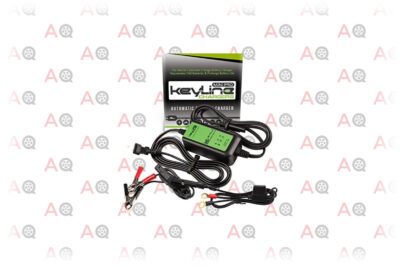
Editor’s Rating:
Design and Performance
The Mini Pro XP is capable of giving your battery the fastest charge it could ever have. This battery charger/desulfator works via a 5 stage process to ensure that your battery is fully desulfated. The beauty of this desulfator is that it works with pretty much any kind of battery, whether sealed AGM or gel cell batteries. It also charges your batteries at the optimum voltage without the kind of damage caused by most trickle chargers.
Pros
- Uses high-frequency pulses
- Comes with crocodile clips
- Has LED indicators that show the condition of the battery.
Cons
- Is a little on the pricier side
2. Lead Acid Batteries

Editor’s Rating:
Design and Performance
This battery desulfator has the ability to reduce evaporation during the desulfation process in your battery and will also extend your battery life. It comes with quite a few cables, including a pair of crocodile clips. It also has LED indicators that show the condition of the battery and whether it can be saved. It uses high-frequency pulses to desulfate, making it highly effective and fast in its operation.
Pros
- Uses high-frequency pulses
- Comes with crocodile clips
- Has LED indicators that show the condition of the battery.
Cons
- Is a little on the pricier side
3. BatteryMinder 12117

Editor’s Rating:
Design and Performance
This battery charger/desulfator was built to avoid overcharging completely. It will test your battery pretty much every microsecond and will only provide the necessary amount of power maintain a full charge. It is also very small and portable, making it highly portable and easy to store. This desulfator uses the superior technology of frequency pulses as opposed to voltage pulses so you never have to worry about your battery overheating. It is also compatible with any battery of 12 volts.
Pros
- Uses high-frequency pulses
- Works much faster than most models
Cons
- Only works with 12-volt batteries
4. BatteryMinder 1510
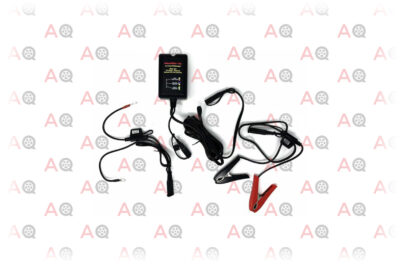
Editor’s Rating:
Design and Performance
This battery desulfator has a charging function built into it and a useful sensor that automatically alters the voltage depending on the temperature readings. This is a very useful feature. Remember that voltage pulses can potentially cause the battery to overheat and lead to a thermal runaway. The BatteryMinder 1510, however, does not allow that to happen, despite using voltage pulses to desulfate the battery. By constantly altering the voltage, the temperature will not rise too high and the battery will be safe while going through the desulfation process. This battery desulfator is certified by the FCC and is highly durable and easy to use.
Pros
- Comes with a voltage regulating sensor
- Comes with a ten-year warranty
- Can charge up to 4 batteries at the same time
Cons
- It’s a little on the pricier side
5. Xtreme Charge XC100-P
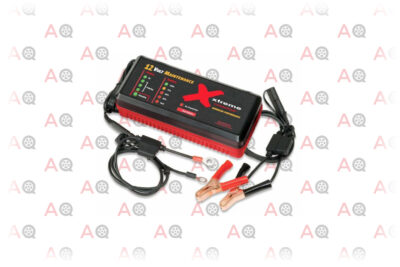
Editor’s Rating:
Design and Performance
The Xtreme Charge XC100-P comes with some extremely long cables. Perhaps they are an ode to its name. This desulfator, which also doubles as a charger, is perfect for getting under the hood of your car, especially if you’re driving a large vehicle. It has a gauge that shows the current level of charge and has a light that tells you if the battery you’ve hooked it to can be saved or not. That’s the best feature in this desulfator; it will even tell you if your battery is beyond salvation or not.
Pros
- It is extremely easy to operate
- It comes complete with some clamps
- Higher maximum current than most other models
Cons
- It is a little on the heavier side
6. BatteryMINDer SCC-515-5
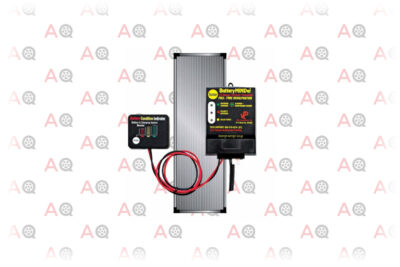
Editor’s Rating:
Design and Performance
BatteryMinder have set themselves apart when it comes to battery desulfators, making some of the best products in the industry. The BatteryMinder SCC005, in particular, is an excellent option, catering specifically to the section of users who go for solar power. This battery desulfator will protect your solar cells against reverse polarity, sparks, and short-circuiting. In the spirit of clean energy, it also comes with its own 5-watt solar panel that keeps it going long after the sun has retreated behind the clouds.
Pros
- It has a weather-tight enclosure that protects it against harsh weather
- It has very easy to read digital indicators
- It has fused ring terminal cords
Cons
- It’s a little on the heavier side
7. Save a Battery Quick Charger
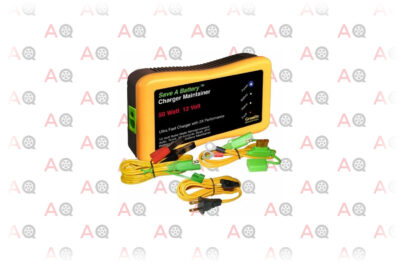
Editor’s Rating:
Design and Performance
The Save a Battery Quick Charger really does save a battery in its own unique way. It comes with a large variety of cords for just about every situation. One of these is a lug cable that is 2 feet long. It also includes an alligator clip that is 6 feet long and an AC power input that is 10 feet long. This battery regenerator really was built for heavy duty work. It also comes with a mounting bracket that allows you to fix it to a wall or install it for permanent use in your vehicle. This battery desulfator is a little on the heavier side, but it does its job well.
Pros
- It is capable of charging up to 4 amperes
- It can be set up quickly and easily
- It has a compact and portable design
Cons
- It is a little on the bulkier side with all the long cords. It is best used as a permanent fixture on your wall or in your wall.
8. BatteryMinder 5-Stage
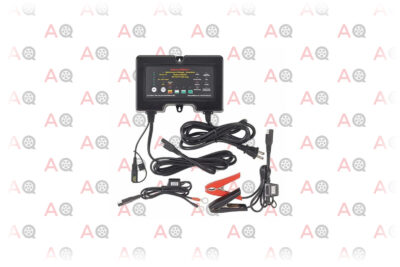
Editor’s Rating:
Design and Performance
This battery desulfator will work on batteries of up to 24 volts, which makes it ideal for the average car battery. It has a detailed LED display that gives you control over plenty of settings and shows you just what is going on. You can decide the number of amperes and also diagnose the sulfation of your battery with no more than the push of a button. It also happens to be very light and portable. It also has an eco-mode for those times when you’re not near a power source and want to preserve the little you have left so it can work on lower consumption.
Pros
- Has an eco-mode for power saving
- It has an auto-restart feature for when there is a power failure
- Is light and portable
- Has a detailed LED display
Cons
- Will not work for batteries with voltages beyond 24 volts
9. Infinitum Reviver

Editor’s Rating:
Design and Performance
This desulfator from Infinitum is one of the more compact ones on the market. It will easily work on just about any battery out there as long as it is 12 volts and below. What we loved most about this battery was the compact and sleek design. It isn’t too heavy and is fairly portable with a nice sleek look. You can take it with you wherever you go and discreetly desulfate your battery without having to find a large space to fit the desulfator as well. The only thorn in the side when it comes to this desulfator is the fact that it can be painfully slow. For you to desulfate your battery completely it could take anything from a few days to several weeks. All that depends on how much lead sulfate had built up in your batteries, to begin with. That said, it’s awesome that it comes with a one year warranty.
Pros
- Sleek design
- Universal
- One year warranty
Cons
- Short cables
- Can take an awfully long time to completely desulfate the battery
Guide to Buying the Best Battery Desulfators
A Closer Look at the Process of Sulfation
It all starts with a lead acid battery. Sulfation is the greatest of evils that plague such batteries, pardon the religious ring to that pronouncement. It is true, however, especially considering that most of the batteries powering our automobiles are lead acid batteries.
A lead acid battery, at least the conventional variety, consists of a few positive lead plates. The negative plates consist of an oxide of lead known as lead dioxide and, together, they are blissfully suspended in a sea of sulfuric acid, all within a cell. Each cell has its lead plate and the number of cells in the battery determines the number of plates.
The battery itself is powered via a few important chemical reactions that determine how electrons are distributed in the mixture. The lead oxide engages in a reaction with both sulfur and oxygen contained in the sulfuric acid. In the process, each single molecule of lead oxide will give up an electron. The collective giving up of electrons by the lead oxide is what leads to the lead plate having a positive charge. The product of the reaction between lead oxide, sulfur, and oxygen, on the other hand, leads to the formation of lead sulfate.
Lead oxide isn’t the only thing undergoing a reaction here, however. The pure lead in the lead plates also undergoes a reaction. It reacts with the sulfuric acid and takes in two electrons in the process, thereby becoming negatively charged. In the process, it also forms lead sulfate, just like the lead sulfate formed by the reaction between lead oxide, sulfur, and oxygen.
These two distinct chemical processes will occur continuously only as long as one external condition is met: the flow of electrons. You seed the electrons lost in the positive lead oxide plates need to be replenished for further reactions to occur. In the absence of an external electronic circuit, the electrons gained by the lead plates will simply find their way back to the electron deficient lead oxide plates and the system will quickly reach equilibrium. Each reaction that is completed by this process will produce about 2.2 V. A typical 12 V battery has about 6 cells, each producing 2.2 V. Since they’re wired together, the overall production is 13.2 V when the battery is fully charged.
During the discharge process, as a battery slowly uses up all that potential energy it has stored inside it, there is a build-up of lead sulfate in the solution and the density of lead sulfate increases as a result. In most conventional designs, that lead sulfate will soon reach a critical density when the battery is discharged at 75% or more. For example, let’s think about a 12 V battery that has a capacity of 100 Ampere-hours, or Ah. When the battery has lost about 25 Ah or more, the lead sulfate in the battery will have achieved critical density. At that density, the lead sulfate will precipitate out of the solutions and form lead sulfate crystals. These crystals will attach themselves to the plates inside the cells and form a spongy covering. If you recharge your battery immediately, then the film will quickly dissolve right back into the solution. That is where things get interesting.
If you leave your battery in this partially discharged state, whether by using it while discharged or storing it, then the spongy film will slowly harden and crystalize, making it very difficult to dissolve back into the solution. This is what we call “sulfation”.
Sulfation takes time and doesn’t happen overnight. It occurs when you repeatedly use or store your battery after it has been discharged below the critical capacity where crystallization begins to take place. Those times when you use your battery to power just about everything in your car from the radio to the air conditioner to the lighter but forget to charge it in the evening and only do so once a month, or those times when you store it in the garage for extended periods of time.
You don’t even have to use your battery for sulfation to occur. It can also occur when you store your battery for extended periods of time. All batteries have some natural internal resistance. This resistance means the battery will discharge even when the terminals aren’t connected to an external circuit. Over time, the battery’s charge will dip beyond the critical level and sulfation will begin to occur. Admittedly, this avenue for sulfation is much slower than using your battery repeatedly but it still does occur. You may have noticed that when you store your battery in the garage for too long it become really hard to fully charge it when you finally begin to use it again. In fact, in some cases, it won’t even charge at all. That is because sulfation has occurred on the plates of the battery.
That said, repeated use of battery’s whose charge has dipped beyond critical levels isn’t the only thing that leads to sulfation; there are numerous other conditions that could lead to sulfation as well. That, however, is the most common way that sulfation occurs and it is what many battery owners should be concerned about.
The Case for Battery Chargers
When it comes to regular battery chargers, the whole charging operation can be divided into one, two, or three stages, depending on the design of the battery charger. There is also a special kind of charging mode known as the switched mode power supply that includes more stages to the whole charging process so that the battery can be completely charged more rapidly.
What is common in all chargers, including the ones that do not use switched mode power supply, is the second stage of the charging process. This stage is usually known as the stage of absorption. When a battery charger is in the absorption stage, it holds a very consistent voltage that is just a bit over the regular voltage of a battery that has been completely charged. So it will typically be around 14 V or more. As the battery fills up, the internal voltage will tend toward the fixed voltage of the chargers, rising to equal the voltage that is being supplied to the battery. In the process, due to the laws of physics, the current flowing in the battery also slows down. The charger is typically designed such that, when the current reaches a certain threshold, the charger turns off. That is how the battery gets charged.
A battery that has suffered from sulfation will naturally have a higher level of internal resistance than one that has not experienced sulfation. It is true even for batteries that are the exact same model from the exact same manufacturer with the exact same construction. In physics, there is a law known as Ohm’s Law that dictates that the current is basically the ratio of the voltage generated by the battery and the resistance inside the battery. If the voltage is especially high, compared to the resistance, then the current will naturally be high. On the other hand, if the resistance is especially high, compared to the voltage, then the current will be low. That said since a sulfated battery has a higher internal resistance than similar batteries but the same level of voltage, the current will naturally be lower in a sulfated battery.
Now, at this point, you’re probably wondering what any of this has to do with anything. Be patient, we’re getting to the point. Do you remember what we said about the predetermined current threshold at which the charger stops charging? Well, if the current was already low, to begin with, then it will reach that threshold a lot faster than a current that was high at first. That is the problem with sulfated batteries. Because of the higher resistance, they have lower current than their normal counterparts. Since the end to the charging process, the point at which the charger stops delivering the charging voltage is determined by the current reaching a certain threshold, these batteries will reach that point faster and the charging process will stop sooner for them. As a result, they stop charging long before they have completely been charged. The charger will tell you that the battery is fully charged when it is, in fact, not. In fact, depending on how far along the process of sulfation is, the battery might have very little energy in it and won’t last you very long when you begin to use it. It will seem to you like your battery is always dying too fast.
So it isn’t that sulfated batteries just don’t have the capacity to charge; they simply have been rendered incapable of charging fully. If there was a way for the sulfation to be reversed, these batteries would charge fully and you wouldn’t have to keep recharging them all the time. In fact, the irksome bit about the whole thing is that, as the capacity reduces and the battery isn’t fully charged, it leads to even more sulfation since the battery is constantly below the 75% threshold. As a result, the capacity reduces further until, eventually, the battery is rendered completely useless. This is good news for your battery manufacturer. It means you’ll have to go and purchase a new replacement battery and they will make a profit. For you, however, it is terribly bad news.
Luckily, there is a solution in the market. This solution is the battery desulfator, which reverses the sulfation process and redeems your battery, making possible again to charge it to full capacity.
The Case for Battery Desulfators
It is possible to dissolve the layer of lead sulfate so it goes back into the solution. To do this, however, requires the charger to apply much higher voltages than they type applied by regular chargers. The problem is that there is a kind of caveat to this process that makes it a bit difficult to just go ahead and apply a very high voltage. When you apply very high voltages to a battery, you could cause it to heat up very rapidly. This could lead to what experts call a thermal runaway.
A thermal runaway is basically a situation where an increase in temperature leads to events occurring that raise the temperature even further and so on, in an uncontrolled positive feedback loop. In a lead acid battery, in particular, a rapid increase in temperature will lead to some unplanned and uncontrolled chemical reactions that will release heat and increase the temperature further. Eventually, your battery may explode.
Some early battery desulfators would find a way around this problem by sending short bursts of high voltage through the battery in order to increase the current flow significantly. While the pulses were very short, they were just long enough to cause the crystallization process to reverse. This was found to be problematic since the long-term use of such pulses of high voltage would cause damage to the lead plates on wet batteries. The situation was worse for sealed lead acid batteries in particular because the use of high voltage pulses would eventually lead to the drying out of the battery, which would, in turn, lead to the failure of the battery.
The latest development in the battery desulfator industry is the use of frequency pulses, rather than voltage pulses, to reverse the crystallization process. These pulses are just as capable of reversing the crystallization process as their electrical counterparts. Let’s take a minute to understand how they work.
It is the case for any structure made of metal that there is some parasitic capacitance and some parasitic inductance in it. These two will always resonate with each other, creating a kind of natural frequency in the metal structure. Since batteries are, due to their plates and terminals, a metal structure, they also some parasitic inductance and some parasitic capacitance. In a battery, the resonant frequency is in the order of a few megahertz, or Mhz. This resonance is often called “ringing” by experts. It won’t, however, affect the functioning of the battery under normal circumstances since the chemical reactions that occur in the battery occur in seconds and are too fast to be affected by megahertz frequencies.
A modern desulfator will, therefore ‘ring’ the battery at its resonant frequency until the film of lead sulfate is shaken off and dissolved back into the acid solution. However, since they aren’t in the order of magnitude to affect the chemical reactions in the battery’s solution, they won’t cause overheating and thermal runaway. It’s much easier to think of it as metaphorically ‘shaking’ the plates of the battery so the crystal film of lead sulfates falls off, much like you would dust an old coat by shaking it vigorously.
Depending on how large or small the battery is, the desulfation process can take anywhere from 48 hours to several weeks to complete for the very largest batteries. All the while, the battery is also charged in trickles to also reduce the amount of lead sulfur contained in the acid solution itself. The very best commercial lead desulfators will even support several batteries in order to support parallel operation and improve the throughput in the process.
How to test your Battery for Sulfation
You can easily test your battery for sulfation to assess the need for a desulfator. That way, you will be able to tell if the problem with your battery is desulfation or there might be another problem which needs to be diagnosed. The best way to do this is by using two very important pieces of equipment: one is a temperature compensated hydrometer of the gauge type or floating ball type variety and the other is a digital voltmeter. Of course, you’ll also need a battery desulfator so you can desulfate the battery, should you find it to have sulfation issues. That said, below is the procedure involved in testing out a 12 volt or 34-volt lead acid battery with filler caps:
- To begin with, carefully remove all of the filler caps on your battery and check the level of the water-liquid electrolyte. This is important because it can give you powerful clues about the state of your battery. If the level of the water-liquid electrolyte has ever been well below the lead plates, then there is likely to have been severe sulfation. This is because the lead sulfate won’t have had the chance to dissolve back into the acid because it never even touched the acid in the first place. In such cases, you will need to put the battery through a lengthy desulfation process in order for the plates to be restored to a condition where the battery is capable of functioning normally. If the level is high and covers the lead plates then your battery is likely safe.
- The next step is to make sure the electrolyte is at the liquid level indicator, in case it is too low. Get some distilled water and refill each cell in the battery to the liquid level indicator and no farther. It’s important here that you practice safety to avoid causing harm to yourself by coming into contact with the acid in the battery. Make sure you follow all the safety protocol associated with refilling the battery as laid out in the user’s manual that came with the battery. Also, you should never use anything other than distilled water when refilling the battery. Water with even the slightest hint of minerals or any other chemicals will likely make things worse and will certainly deteriorate your battery’s condition.
- Once you’ve refilled the battery, it is time to recharge it before determining its condition further. Remember that a battery that has gone through sulfation will never be able to charge to full capacity. Due to the lower current, it will reach the cut-off threshold much faster than a battery that hasn’t been through any kind of sulfation. In order to determine whether your battery is fully charged or not, and the possibility that it has undergone sulfation, it is important to first charge it until the charger indicates that the battery is full. From there it is much easier to test for sulfation. Make sure to charge it for a long time – preferably 12 to 14 hours at the least.
- After charging the battery, allow it to rest overnight. At the very least, it should be left on its own without being connected to an external circuit for a minimum of 12 hours.
- So you’ve charged your battery completely and given it half a day’s rest. All of that should have taken slightly over a day. Trust the process and bear with it. Nobody said it was going to be an instant result. Now that you’ve done all of that, it is time to conduct some tests on the battery.
- Test the battery with the temperature compensated hydrometer or the digital voltmeter. You can actually use both or just one and still be able to get a good measurement. For this, you will have to understand how to use this equipment. If not, you will have to ask an expert for help.
- If your battery shows signs of desulfation then connect it to the desulfator and allow for it to begin the desulfation process. Depending on the type of desulfator you use and the condition of your battery, this process could take anything from several hours to several weeks. If you buy the right kind of desulfator, you won’t even need to use the voltmeter and the temperature compensated hydrometer. Instead, the desulfator itself will show you the condition of the battery and whether it is in need of desulfation or not.
- Once the desulfation process is complete, reconnect the battery to a charger and recharge it then test it again.
- Keep on doing this repeatedly until the desulfation process is complete.
So there you have it; that is the full story on desulfation. As you can see, it is the kind of thing that a little understanding can make you deeply appreciate. Many battery manufacturers would prefer it if you knew nothing about desulfators because their profits are directly tied to your ignorance, but don’t worry, we won’t let that happen. Now that you know how to save your battery, you can pick the right battery desulfator for yourself and reclaim that old battery that never seems to keep its charge more than a day at a time.


